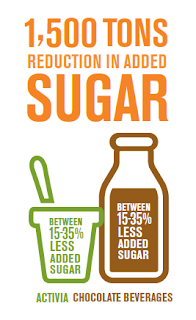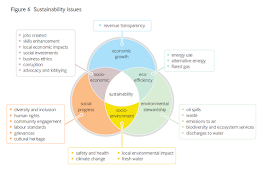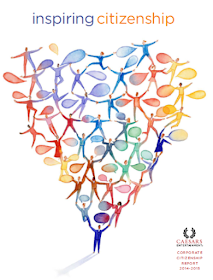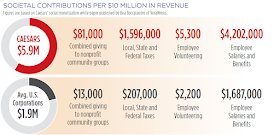Strauss Group is a food and beverage company, dedicated to enriching and
improving people's lives through our fresh, delicious, nutritious, and innovative products. The Group's portfolio of five companies provides a response to two leading trends in food and beverage consumption: Health & Wellness, and Fun & Indulgence. Strauss Group is active in 24 countries, generates more than $2 billion in consolidated sales and employs more than 12,000 people. Last month, Strauss Group published its eighth annual Sustainability Report. (Disclosure: Strauss Group is my client and we supported the preparation of this report and two prior reports.)
This is Strauss Group's first report following the publication of the Group's 2020 Sustainability Strategy last year. The strategy is based on three degrees of impact supported by three levels of performance.
Degrees of impact
reflect the progression of Strauss Group's impacts on
different stakeholder groups and the degree
to which the Group is in a direct position to create
positive value. The first degree is colleagues, the most direct relationship of all between the Group and any of its stakeholders and through whom all our other stakeholder
groups are reached. The second degree of impact is on consumers, whose lives are enriched by the products Strauss Group develops and markets. The third degree of impact is citizenship - impacts in the supply chain, in the environment and in local communities. Each strategy dimension is backed by targets - some of which require the Group to meet expected standards of behavior, such as upholding ethical conduct and governance, while other targets require a stretch to exceed past performance or to lead the market with performance that is among the best-in-class in the industry.
Strauss Group's 2014 Sustainability Report was written in three broad parts aligning with the strategic approach. Within this, six most material impacts guided and focused the content of this G4 Core report. These are the six ways that Strauss Group says sustainability.
Strauss Group's 2014 Sustainability Report was written in three broad parts aligning with the strategic approach. Within this, six most material impacts guided and focused the content of this G4 Core report. These are the six ways that Strauss Group says sustainability.
Healthy lifestyles: Strauss Group promotes and supports healthy living through a wide range of products and innovative new foods such as fresh vegetables and salads, super foods such as hummus and kale, functional foods that offer added health value such as probiotic yogurts or foods with added vitamins and minerals. Also, Strauss continues to improve the nutritional profile of its foods by reducing sugar, salt and fats across a wide range of the portfolio.
But making great healthy products is not enough. Consumers have to get used to the different taste of low sugar content, for example, or venture into new territory by using vegetables, such as kale, that they have not tried before, so much of Strauss's efforts go towards consumer education and awareness. Similarly, consumers can be encouraged to consider lifestyle in a more holistic way - it's not only about food. Strauss Water develops and markets WaterBars for hot or cold purified water at the push of a button. Research shows that families that have a WaterBar drink more water. And in 2014, Strauss developed a mobile app that helps people get moving by connecting them with free outdoor gym spaces, personal trainers and like-minded others who seek more physical exercise. Sabra engaged with thousands of consumers in the U.S. at a specially created Hummus House, to help consumers get to know the health (and taste) benefits of hummus as a part of our daily diet.
Innovation is often a key to improving the health profile of food products, and for some years now, Strauss has taken the lead as a food-tech enabler, providing a platform for sustainable food technology innovation. In 2014, this was formalized in the form of a collaboration to create a food-tech incubator over 8 years with the Office of the Chief Scientist in Israel at an investment by Strauss of up to more than $10 million to help transform the food industry through breakthrough new approaches to food product development, design, manufacturing and delivery.
Product transparency and responsible marketing: Strauss meets consumer expectations and regulatory requirements for all food products. Labels are clear and aim to meet all consumer information needs. Responsible marketing standards are upheld, especially in relation to non-marketing of fun and indulgence products to kids. Strauss makes significant efforts to be transparent and open up many different communication channels for consumers - via call centers for consumer queries, or via social media or the company's website.
Reducing resource consumption and waste: In 2014, Strauss Group reduced energy consumption per ton of product by 8% and GHG emissions per ton of product by 25% across global operations, achievements that follow on the heels of significant resource reductions in prior years. Similarly, Strauss Group reduced water withdrawal per ton of product by 12%. While overall waste did not show a reduction in 2014 (increase of 23% per ton of product), the amount of waste diverted to landfill remained high at 83%. Several initiatives are advanced throughout the Group to reduce resources and environmental impacts, including the conversion of all Israel operations to natural gas, and the expansion of the Sabra production facility in the U.S. to LEED silver green building certification.
Engaging employees: Strauss continues to invest in leadership development, training and education for employees across the Group's operations, as well as in occupational health and safety. In Israel, for example, a focus in 2014 was safety in the sales force with a significant improvement in results.
Ethical supply chain: Sustainable sourcing continues to be a prime consideration for Strauss Group and Strauss Coffee continues to source a portion of green coffee that is certified sustainable. In addition, advances were made in 2014 in the sustainable sourcing of cocoa and sesame seeds, two top ingredients for Strauss.
Diversity in everything we do: A diverse workforce for Strauss means both advancing women in management and creating an inclusive workplace for employees from all backgrounds. In 2014, Strauss Group achieved a level of 40% of women in management positions. In addition, Strauss in Israel was recognized by the Forum for Diversity Hiring for advances in hiring populations that are traditionally excluded from the mainstream workforce.
That's six ways that Strauss Group says sustainability and just a few examples of the activities that back up the words. As always, it's a privilege to work with companies that have a genuine desire to make a positive impact on society through the business they do.
Take a look at the report. Give feedback!
elaine cohen, CSR consultant, Sustainability Reporter, HR Professional, Ice Cream Addict. Author of Understanding G4: the Concise Guide to Next Generation Sustainability Reporting AND Sustainability Reporting for SMEs: Competitive Advantage Through Transparency AND CSR for HR: A necessary partnership for advancing responsible business practices . Contact me via Twitter (@elainecohen) or via my business website www.b-yond.biz (Beyond Business Ltd, an inspired CSR consulting and Sustainability Reporting firm). Need help writing your first / next Sustainability Report? Contact elaine: info@b-yond.biz









































